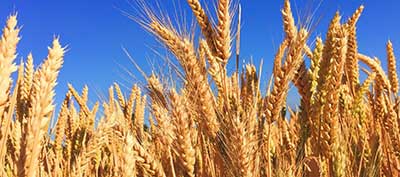Relevance: GS-3: Major crops-cropping patterns in various parts of the country, transport and marketing of agricultural produce and issues and related constraints.
Key Phrases: Invasion, cereal, dietary fiber, humidity, clay loam, holding capacity, security programmes, APEDA, Pest Risk Analysis, phytosanitary, IPPC, Fertile Crescent.
Why in News?
- Russia’s invasion of Ukraine and the subsequent western sanctions on Russia have affected wheat exports from the Black Sea region and impacted food security in several countries, especially in Africa and West Asia.
- The disruption to global wheat supplies in turn has thrown open opportunities that India’s grain exporters are eyeing, especially given the domestic surplus availability of the cereal.
- Union Minister for Commerce and Industry said on Friday that Egypt, one of the largest importers of wheat, had agreed to source the cereal from India.
Key Facts About Wheat
- Wheat is a grass widely cultivated for its seed, a cereal grain which is a worldwide staple food.
- The archaeological record suggests that wheat was first cultivated in the regions of the Fertile Crescent around 9600 BCE.
- Wheat is grown on more land area than any other food crop.
- When eaten as the whole grain, wheat is a source of multiple nutrients and dietary fiber.
- It grows best when temperatures are warm, from 70° to 75° F (21° to 24° C), but not too hot.
- Wheat also needs a lot of sunshine, especially when the grains are filling.
- Areas with low humidity are better since many wheat diseases thrive in damp weather.
- Soils with a clay loam or loam texture, good structure and moderate water holding capacity are ideal for wheat cultivation.
What is the Status of India’s Wheat Exports?
- Globally, Russia is the market leader for wheat exports (almost 15% share) and Ukraine is also a major producer.
- Exports from these two countries have been hit by the war and sanctions.
- India expects to produce 112 million tonnes of wheat in the current season.
- The government requires 24-26 million tonnes a year for its food security programmes.
- With surplus wheat production, opportunities have opened up for exports.
- Wheat exports in the 2021-2022 financial year were estimated at 7.85 million tonnes, a quadrupling from 2.1 million tonnes in the previous year.
- More countries are turning to India because of the competitive price, acceptable quality, availability of surplus wheat and geopolitical reasons.
- While the existing importers are buying more, new markets have emerged for Indian wheat.
- Exports this fiscal are expected to be almost 10 million tonnes worth $3 billion.
Which new Markets are Expected to Buy from India?
- The different grades of wheat produced in India are of the milling quality.
- So, apart from Egypt and Jordan, countries in East Africa are also likely to source the food grains from India.
- India has sent out dossiers to over 20 countries and talks are on at different levels with all these countries.
- The aim is to reach early resolution on the Pest Risk Analysis by each of these countries so that exports can take off.
- The Agricultural and Processed Food Products Export Development Authority (APEDA) and Ministry of Agriculture are also sending delegations to several countries to resolve market issues, if any.
What is being done to facilitate the Exports?
- The Commerce Ministry has put in place an internal mechanism to facilitate it and get the paperwork ready for the related sanitary and phytosanitary applications to help facilitate shipments.
- Wheat is going in full vessel loads and needs to be transported to the ports from the growing areas.
- The railways is providing rakes on priority to move the wheat.
- The railways, ports, and testing laboratories are all geared up to meet the requirements.
What Norms are Buyer Countries Using to Approve Indian Wheat?
- Countries that have not previously imported wheat from India insist on the completion of the Pest Risk Analysis to provide market access.
- There are also other different standards that the buyers share with their sellers here.
- While, at present, Indian suppliers are able to meet these criteria, Indian authorities are working closely to step in and negotiate resolution if any “unreasonable” standards are stipulated.
Note:-
- Pest risk analysis (PRA) is a form of risk analysis conducted by regulatory plant health authorities to identify the appropriate phytosanitary measures required to protect plant resources against new or emerging pests and regulated pests of plants or plant products. Specifically pest risk analysis is a term used within the International Plant Protection Convention (IPPC).
Way Forward
- The government is optimistic about the long-term export opportunities not only for wheat, but for all cereals including millets and super foods.
- Trade sources say if Indian wheat prices remain competitive and geopolitical and weather conditions stay favourable, the scope is good for wheat exports. India has won the confidence of markets such as Sri Lanka and Bangladesh.
- It needs to establish itself in the new markets too and the government should facilitate it.
Sources: The Hindu
Mains Question:
Q. Does India have surplus wheat production? What is being done to facilitate the exports? (250 words).









